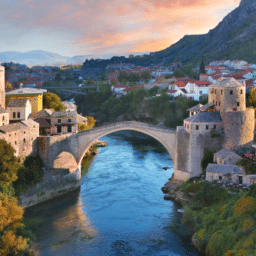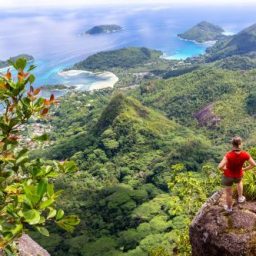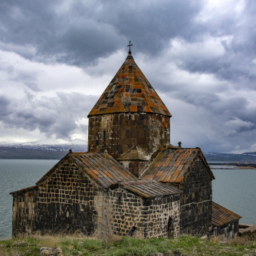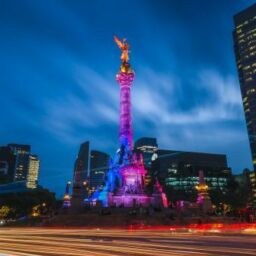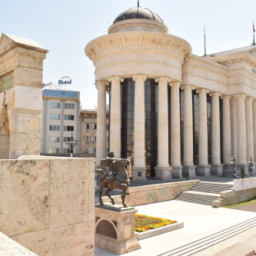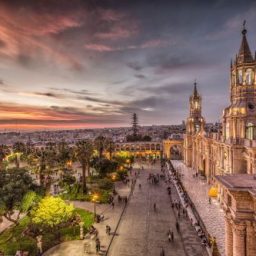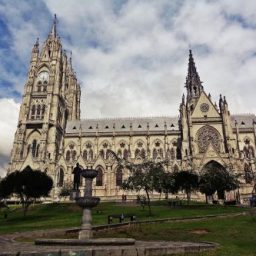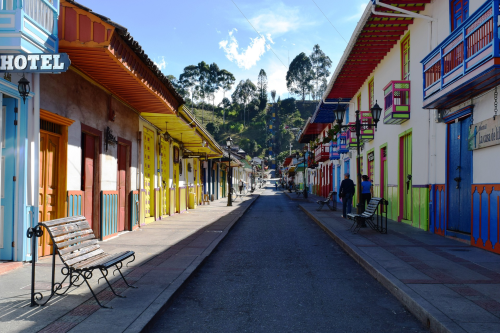
What first comes to mind about Columbia might be Pablo Escobar and illegal drug trafficking. However, the country managed to put the worst behind it and is becoming one of the more popular tourist destinations. Natural beauty, Andes, Amazon jungles, picturesque coasts, and beautiful post-colonial architecture are just some of its attractions.
So what do you need to know before visiting Colombia? After reading our article, you will have all the information you need to plan a perfect trip to this country. To begin, we cover basic information about the country and its language.
Contents
The Republic of Colombia and its geography
The Republic of Colombia is a country in the northwest of South America. A former Spanish colony, since 1819 it is an independent state. In terms of population, it is the third country on the continent (45 million citizens). The capital of Colombia is Bogotá, the second-largest city is Medellín. Nowadays, the country is famous for its exquisite coffee, mountain landscapes, and Caribbean beaches.
Geography of Colombia
It is the only country in South America that borders both the Atlantic (through the Caribbean Sea) and Pacific oceans. From the south, the country is crossed by the Andes, while the eastern regions are covered by the lush Amazon jungle. The highest peak in the land is Cristóbal Colón, and the longest river is Río Grande de la Magdalena.
The climate of coastal regions of the country is tropical, while the mountainous ones are cooler. Since the country is located on the equator, there are no seasons.

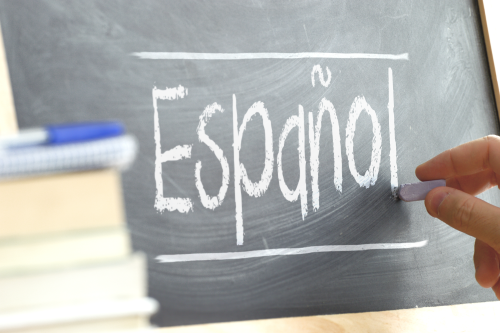
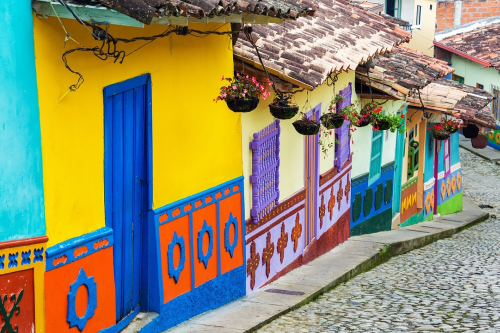
Language of Colombia
The official language of Columbia is Spanish (at times called Castilian, since there are more languages in use in Spain). It is the second most widely spoken language in the world, in terms of the number of native speakers. There are over 475 million of them, and an additional 75 million speak Spanish as a second or third language.
Outside of Columbia, Spanish is the official language of 17 other states in Latin America, Puerto Rico, the Philippines, Equatorial Guinea, the state of New Mexico in the USA, and Spain itself. Additionally, it is the language of numerous international organisations like the European Union, United Nations, UNICEF, and WHO.
Spanish owes its popularity mainly to the colonization of South America by the conquistadors that started in the 15th century. The colonisers settling on the new continent also brought their regional dialects with them.
Therefore, Spanish used in Spain and Latin America differs in several aspects. In Spain, the North Castilian pronunciation is regarded as the standard pronunciation. By contrast, in Latin America, the seaseo pronunciation is assumed as standard.
Basic Spanish phrases
Basic Spanish phrases will come in handy not just in Columbia, but in a number of other countries. These basic expressions should make feel more at ease in your journeys through the Spanish-speaking world.
- Sí – Yes
- No – No
- Tal vez – Maybe
- Por favor – Please
- Gracias – Thank you
- Está bien – That’s ok
- Muchas gracias – Thanks a lot
- Disculpe – Excuse me
- Lo sé – I know
- No lo sé – I don’t know
- Comprendo – I understand
- No comprendo – I don’t understand
- Perdón – I’m sorry
- ¿Hablas español? – Do you speak Spanish?
- No hablo español – I don’t speak Spanish
- ¿Podría, por favor, repetir eso? – Can you repeat?
Polite phrases
- De nada – Please
- No tiene importancia – Don’t mention it
- No pasa nada – You’re welcome
Greetings and Goodbyes
- Hola – Hello
- Buenas – Hi
- Buenos días – Good Morning
- Buenas tardes – Good Evening
- Adiós – Goodbye
- Buenas noches – Goodnight
- ¡Nos vemos! – See you!
- ¡Hasta luego! – See you later!
- ¡Qué tengas un buen día! – Have a nice day!
Signs in public places
- Entrada – Entrance
- Salida – Exit
- Salida de emergencia – Emergency exit
- Empujar – Push
- Tirar – Pull
- Aseos – Toilets
- Caballeros – Gentlemen
- Señoras – Ladies
- Libre – Free
- Ocupado – Occupied
- Fuera de servicio – Out of service
- No fumar – No smoking
- Privado – Private
- No pasar – No entrance
Tourist attractions in Colombia
What’s worth seeing in Colombia? Here are just a few, in our opinion, most interesting places:
- Popayán pyramid
- Tierradentro – the largest archaeological site in Colombia
- beaches on the coasts near Santa Maria Tayrona
- National Park Amacayacu
- National Park Isla Gorgona
- “the coffee triangle” – the region around the city of Manizales, where you can taste the best coffee in the world
- the trail to the lost city of Ciudad Perdida

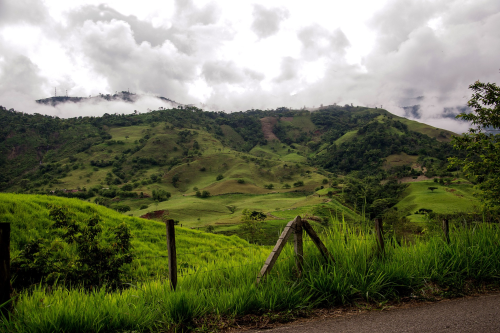

Safety and political situation in Colombia
The last decades of the 20th century in Columbia were a painful period. The country was being torn apart by internal conflicts between the army, drug cartels and paramilitary rebels. But much has changed since then and outside the southern regions, where the illegal organisations are still active, the threat of terrorist attacks and organised crime is relatively low.
The common crimes, however, are still a real issue. Theft is common, the kidnappings also happen. For that reason, it is recommended to take caution and avoid carrying large amounts of cash and wearing expensive jewellery in public.
The last very real threat to keep in mind is earthquakes, as Columbia lies in an active seismic zone.
Colombia – useful information for visitors
Here’s a compilation of our practical advice that will surely prove useful for planning a trip to Colombia.
General entry requirements
First, you should find out if the visitors from your country require a visa to enter Colombia. For travellers from many developed countries, it won’t be needed. The length of the visa-free stay in the territory of the Republic of Colombia is determined by the purpose of the visit.
For tourists, the visa-free period lasts 90 days and can be extended by another 90 days for a fee.
Those visiting to establish economic cooperation or participate in academic activities lasting no longer than one semester can stay in the country visa-free for 180 days.
For specialists providing services for public institutions and private organisations, the duration of the visa-free period is 30 days. It can be extended by a maximum of 15 days or for the period required to complete agreed commitments. The right of entry for 30 days can also be obtained by receiving an appropriate invitation.
The purpose of the visit has to be declared to the border control upon every crossing. Based on that declaration, an appropriate period of stay and exit date will be assigned. This information will be put in your passport.
Local time in Colombia
There is only one time zone in Colombia – UTC-5, 5 hours offset from the universal coordinated time. There is also no summer or winter time.
Transit and customs advice
All travellers are required to fill out a customs declaration. The maximum amount of cash that can be brought in or out of Colombia without a customs declaration is equal to $10,000 or the equivalent in other currencies. There is no refund of value-added tax when leaving the country.
The penalties for drug trafficking in Columbia are heavy. They reach up to 12 years in prison and a fine of up to $50.000. Parole can be granted at the earliest after serving two-thirds of the sentence. However, even parole felons are banned from leaving Colombia for the rest of their sentence. As the country doesn’t have any mutual enforcement agreements in place, the sentence cannot be served in the home country. Colombian prisons don’t have a good reputation, and staying in one is a real danger for foreign inmates, especially without help from the outside.
Currency and financial matters
The currency used in Colombia is the Colombian peso. Cash can be exchanged at exchange offices in city centres, airports and shopping malls. To exchange cash, the original passport must be displayed. Alternatively, one can certify the exchange by leaving a fingerprint. The maximum value of a single exchange amounts to $1000 or equivalent in other currencies. The same limit is applied to any transaction made via the electronic money transfer system.
Having in mind the rising number of attempts to use illegal devices to steal debit card data, it is strongly recommended to only use ATMs located in enclosed facilities.
Usually, payments in foreign currencies are not accepted. The only exceptions are high-class hotels, jewellery stores and art galleries, where payments in USD are sometimes accepted. In contrast, international debit cards are accepted in most businesses.
Prices in Colombia
Prices for accommodation, transport, or food shouldn’t seem high in comparison to developed countries. They may even be considered as quite affordable. For example, a stay in a 3-star hotel won’t exceed $100, and a small rental car for a day should close under $50.
Insurance
Personal accident insurance isn’t required to enter Colombia. However, it is worth equipping yourself with one, because usually foreign policies of such kind aren’t accepted. Nonetheless, insurance that result from having certain credit cards is respected. Before departure, check the validity and what is covered under it.
Vaccination and health matters
Because of the risk of contracting yellow fever, an illness that occurs especially in tropical countries, you should take the vaccine against it at least 10 days before entering Colombia. The presentation of a valid vaccination certificate may be requested upon entering the country when travelling to tropical regions in particular. Vaccinations against hepatitis A and B, typhoid and rabies are also recommended, but not mandatory.
Visitors have the option of using paid medical services. The costs of such should turn out rather affordable for foreigners, and the quality is up to par.
Medication is easily accessible in pharmacies (some are open 24/7) and at dedicated stands in selected groceries.
Public transport
Unfortunately, there is no passenger train system in Colombia. The easiest and most cost-effective way to get around the country is through long-distance buses. In mountainous regions, connections can sometimes be obstructed or blocked by local floods and landslides.
A safer, but also much more expensive option, will be air transport. The network of domestic air connections is very extensive. By plane, you can travel to all the capitals of local departments and many other urban centres. International connections are also handled at the largest airports.
In cities, public transport consists mostly of buses and cabs (Medellín is the only city with a metro system). Tickets can be purchased on buses and there is a stop-on-request rule. For foreigners, it is also recommended to use only cabs ordered by phone to reduce the risk of falling victim to criminals pretending to be drivers.
Driving licence
With an international driving licence, you can rent a car in Colombia. But think twice before deciding on this means of transportation. Traffic regulations are practically non-existent. Local drivers either don’t know them or choose to not follow them. The driving culture is very poor. Nobody uses turn signals and respects the right-of-way rule. This is especially true for bus and taxi drivers in larger cities.
Embassy and consulate
The embassy and consulate are two significant places when staying abroad. Hopefully, you won’t need their services, but in case you do, it is better to know how to reach them beforehand. Take a moment while planning the journey to find the information about your country’s diplomatic post
Kolumbia ze Skrivankiem
Establishing contacts with Colombians – private, as well as professional – is much easier if we know the Spanish language. What to do, if we haven’t mastered this ability? We have two options – beginning learning courses (on-site or off-site) or ordering a translation. Either way, you can count on us!




